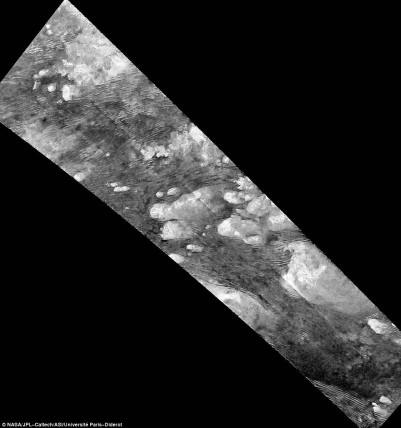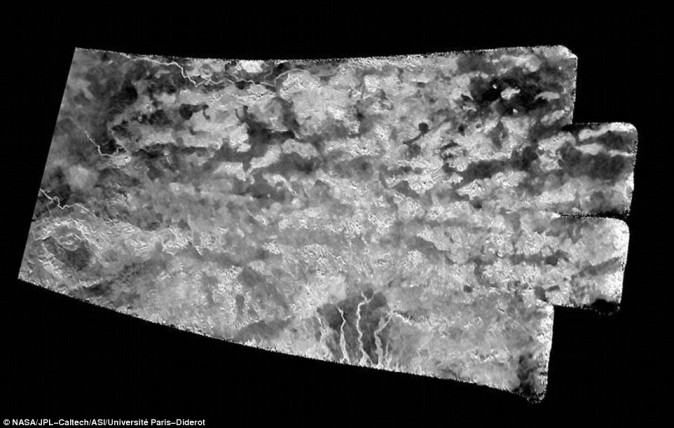NASA discloses images of the landscape of Saturn’s massive moon, TITAN
On the 25th of July, NASA’s Cassini Spacecraft clicked stunning landscape pictures of Saturn’s largest moon, TITAN, during a flyby conducted, with the craft passing within just 607 miles of the moon.

NASA explains that the spacecraft’s radar penetrated the dense haze of the moon to obtain such detailed pictures and by doing so, the linear dunes on the moon have been revealed. According to astronomers, these linear dunes were most probably formed by the settling of grains of hydrocarbons on the moon’s surface from the atmosphere. These images of the dunes can help scientists gain new information on the moon’s sands, winds, etc.
Apart from the dunes, the Cassini spacecraft has also sent images of an area on the moon named “the Xanadu annex”, which seemed to have an area similar to the larger “Xanadu area”, hence the name. The annex seems to have a terrain very similar to the large Xanadu region as well.

The July 25th flyby is the last time Cassini will collect footage of the southern latitude of the moon. The remaining four flybys will be used by the spacecraft to capture footage of seas and liquid-filled lakes in the Northern parts of the massive moon
The Cassini Spacecraft will perform 22 orbits below Saturn and its rings for its last mission which will begin in April 2017.
Also read:
Earth-sized planets capable of intelligent life orbit a dwarf star near us!

OMG-inducing, share-compelling, like-attracting, clutter-breaking, thought-provoking, myth-busting content from the country’s leading content curators. read on...
